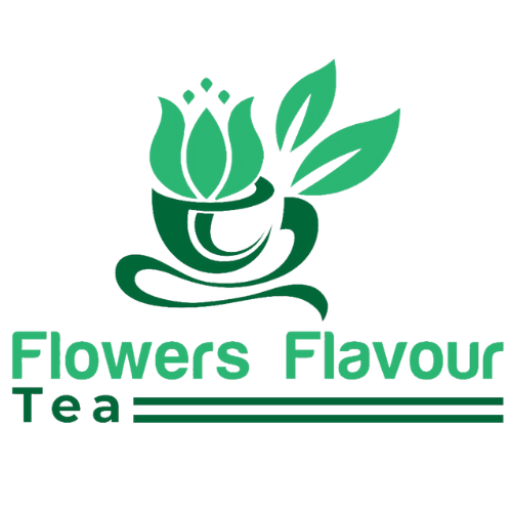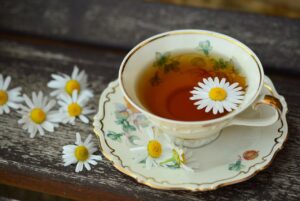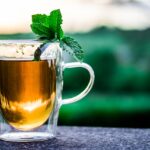There’s nothing quite like a freshly brewed cup of flower-infused tea—fragrant, soothing, and packed with health benefits.
Whether you’re a tea lover or a beginner, brewing flower teas at home is an easy and rewarding experience.
In this ultimate guide, we’ll cover:
✅ The best flowers for tea
✅ How to properly brew them
✅ Tips for enhancing flavor
✅ Common mistakes to avoid
Let’s get started! 🍵🌸
1. Choosing the Right Flowers for Tea:
Not all flowers are suitable for tea, so it’s essential to pick the right ones.
Here are some popular edible flowers that make delicious and healthy teas:
🌿 Best Flowers for Tea & Their Benefits
- Chamomile – Helps with sleep and relaxation 😴
- Hibiscus – Lowers blood pressure and boosts immunity ❤️
- Lavender – Reduces stress and anxiety 🌿
- Rose – Enhances skin health and mood ✨
- Butterfly Pea Flower – Improves brain function and creates a stunning blue tea 💙
- Jasmine – Refreshing aroma, great for digestion 🌼
- Calendula (Marigold) – Supports gut health and detoxification 🌞
💡 Tip: Always use organic, pesticide-free flowers to ensure safety and purity.
2. How to Brew the Perfect Flower Tea:
Brewing flower-infused tea is simple, but steeping it correctly is key to extracting the best flavors and benefits.
Follow these steps:
🌸 Basic Flower Tea Brewing Method
Ingredients:
✔ 1–2 teaspoons of dried flowers (or a handful of fresh flowers)
✔ 1 cup of hot water (not boiling)
✔ Honey or lemon (optional)
Steps:
1️⃣ Boil water – Bring water to about 80–90°C (176–194°F) (boiling water can destroy delicate flower flavors).
2️⃣ Add flowers – Place flowers in a teapot, infuser, or directly in your cup.
3️⃣ Steep properly – Let the tea steep for 3–7 minutes, depending on the type of flower.
4️⃣ Strain & enjoy – Remove the flowers, add honey or lemon if desired, and sip your fragrant, healthy tea!
💡 Tip: Longer steeping can enhance the color and health benefits, but avoid over-steeping as it may turn bitter.
3. Cold Brew vs. Hot Brew – Which is Better?
Both methods bring out different flavors in flower teas. Here’s how they compare:
🔥 Hot Brew (Traditional Method)
✔ Stronger aroma & quicker results
✔ Best for warming & relaxing teas (chamomile, lavender)
❄️ Cold Brew (Refreshing & Smooth)
✔ Sweeter, milder flavor
✔ Best for summer drinks (hibiscus, butterfly pea tea)
✔ How to cold brew:
- Add flowers to cold water
- Let it steep in the refrigerator for 4–8 hours
- Strain and enjoy over ice!
💡 Tip: Cold brewing is perfect for iced teas and brings out a less bitter taste.
4. Flavor Enhancements – Making Your Tea More Exciting:
Want to elevate your flower teas? Try these flavor enhancers:
🍯 Sweeteners:
- Honey – Natural and healthy
- Stevia – A low-calorie alternative
- Jaggery – Adds a rich, earthy sweetness
🍋 Add-ons for Extra Health Benefits:
- Lemon – Enhances vitamin C & brightens flavor
- Ginger – Adds warmth & aids digestion
- Mint – Refreshing and cooling
💡 Tip: Experiment by mixing different flowers (e.g., hibiscus + rose for a floral-fruity blend).
5. Common Mistakes to Avoid: 🚫
Avoid these tea brewing mistakes for the best experience:
❌ Using boiling water – Can make the tea bitter & destroy nutrients
❌ Steeping too long – Over-extraction may cause a strong, unpleasant taste
❌ Not covering while steeping – Essential oils evaporate, reducing flavor
❌ Using too many flowers – Can overpower the taste
💡 Tip: Always start with a small amount of flowers and adjust based on taste preference.
Final Thoughts:
Brewing flower-infused teas at home is an art and science—but it’s also fun and rewarding!
Whether you prefer a warm chamomile tea before bed or a refreshing iced hibiscus tea, there’s a perfect flower tea for every mood.
🍵 Ready to start your tea journey? Explore our collection of premium flower teas at Flowers Flavour Tea and bring the magic of nature into your cup! 🌿✨






